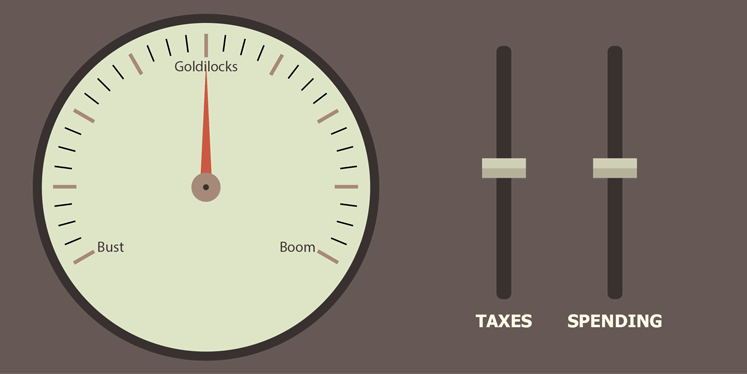Fiscal Policy
Fiscal Policy is the means by which Governments attempt to stabilize economies. Whereas central banks use Monetary Policy to control economic conditions, governments use Fiscal Policy to do the same. For Fiscal Policy in the US, the federal government, or more specifically the Treasury, generally enacts Fiscal Policy by increasing or decreasing taxes and/or spending.
As shown in the following graphic, during an economic boom, the Treasury could increase taxes and decrease spending to get the economy to a “Goldilocks” state, in which the economy is neither too hot nor too cold. On the other hand, during a recession or depression, the Treasury could decrease taxes and increase spending to stimulate the economy into stability. This is all just economic theory, of course, which can be debated; however, one aspect seems irrefutable – when politics gets involved, taxation and expenditure change is difficult to implement and measure! Sorry, the political satire could not be helped.
Most Fiscal Policy plans are based on Keynesian economics, which maintains that governments can influence aggregate demand and economic output by changing government revenue (i.e. taxes) and expenditure (i.e. spending). John Maynard Keynes popularized this theory during the Great Depression, during which President Roosevelt used Keynesian Economics as the basis for the New Deal, a series of economic programs to stimulate the economy. Other examples of Keynesian-based fiscal policies include those enacted during the Great Recession. Great Recession policies included the Economic Stimulus Act and the American Recovery and Reinvestment Act.





